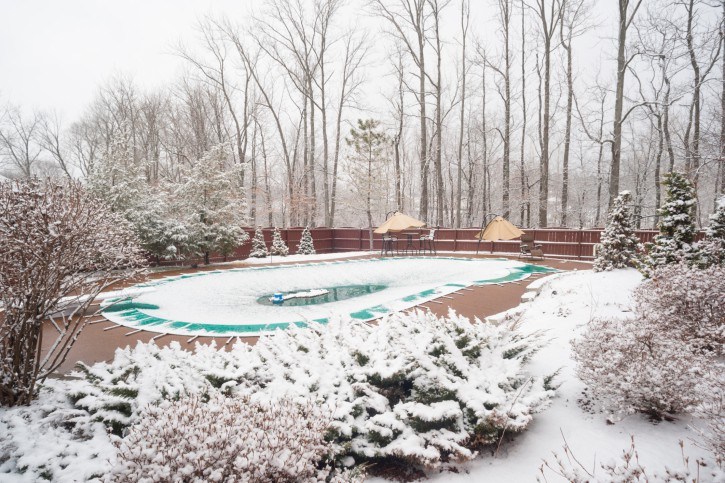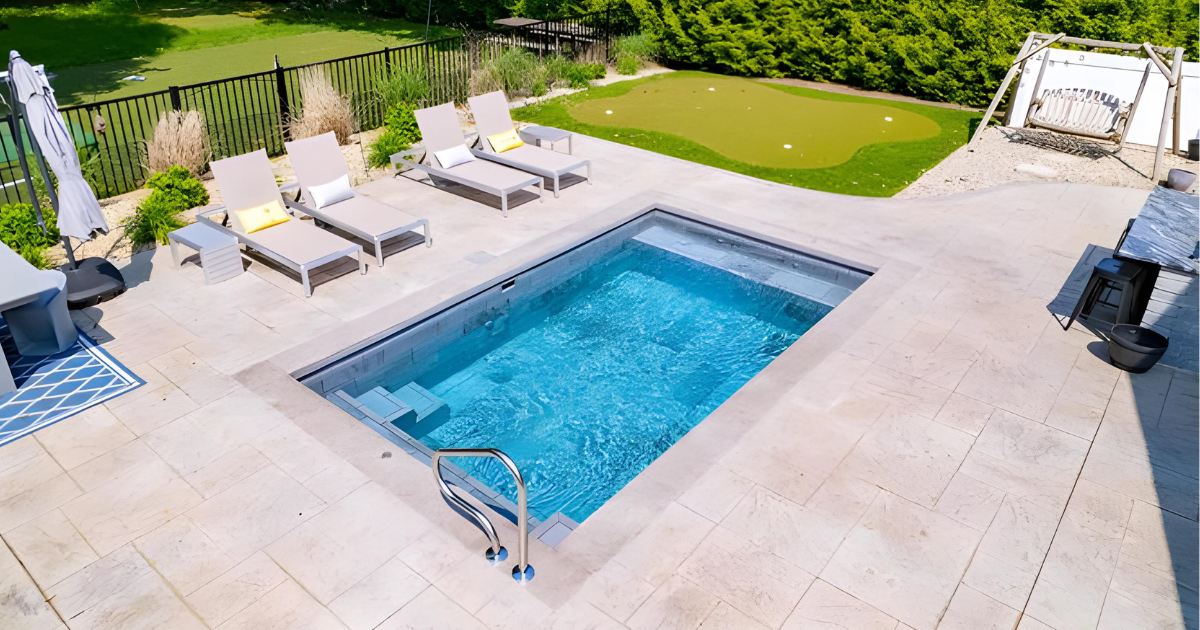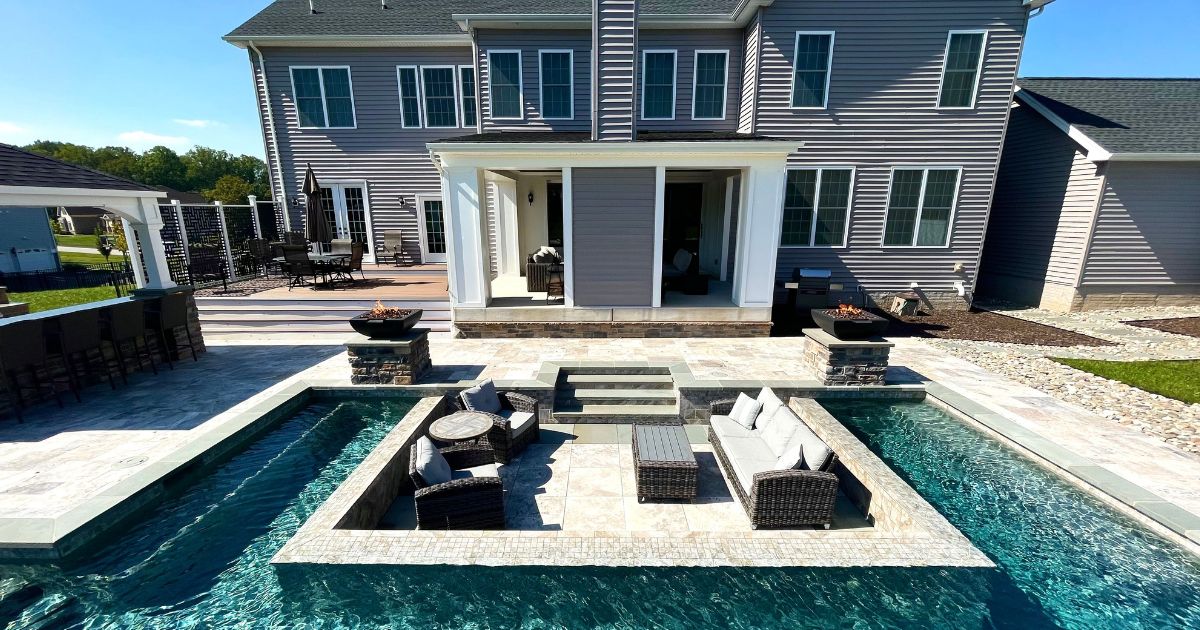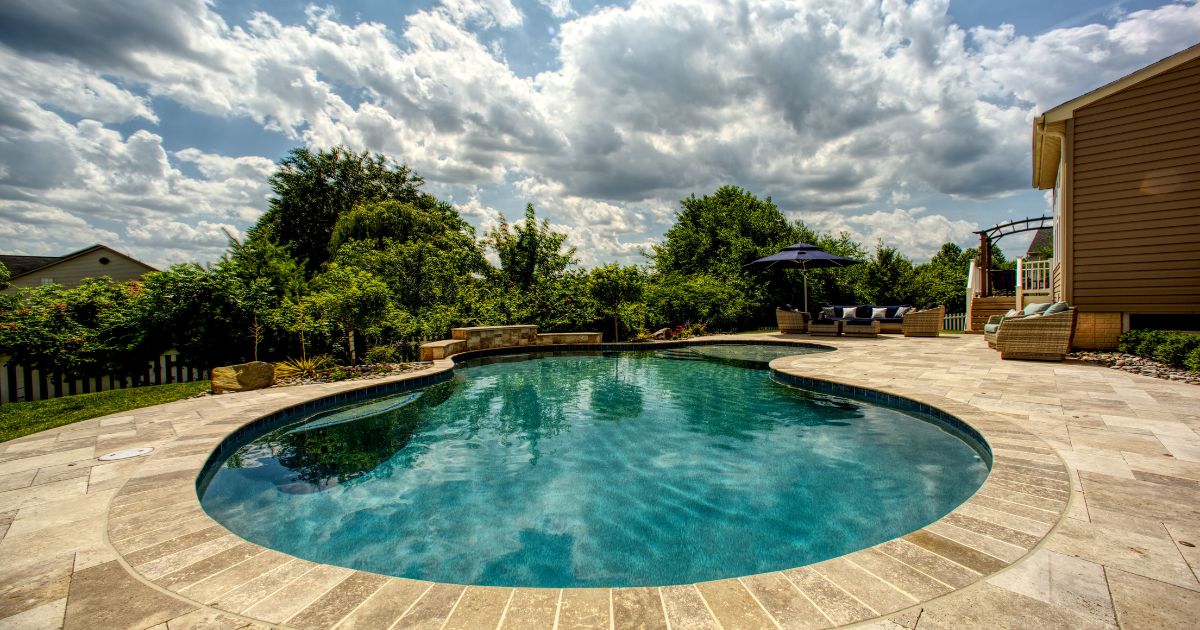Wondering how you can get the benefits of living waterside in a small backyard? Then…

Top DIY Inground Pool Closing Disasters
Let’s face it. Some people are better at DYI projects than others. If you’re handy around the house or fix your own car, you can probably handle closing your own inground pool. Just be sure to avoid these DIY inground pool closing disasters.
OK, disaster may be too harsh of a word. But there are a number of ways trying to close your pool yourself without the skill and knowledge to do it can cause real problems.
1. Waiting Too Long to Close Your Inground Pool
The best time to close your pool is when the water temperature is consistently below 65 degrees. Don’t wait until temperatures get down to freezing overnight. Doing so can cause the water lines to freeze, which can cause burst pipes.
2. Not Blowing Out and Plugging the Water Lines Properly
Blowing out the water lines and plugging them is a crucial step in closing and winterizing your inground pool. Leaving water in the lines allows the water to freeze and thaw, freeze and thaw. That will eventually cause burst pipes, which you may not know about right away. It can also damage your pool pump and heater. You’ll have to replace all the damaged plumbing fixtures in the spring.
3. Draining the Pool
Some people think they are supposed to thoroughly drain their inground pool before closing it. This is totally wrong. Draining your inground pool can cause bending, bowing or a total collapse of a fiberglass pool. It can cause cracks in a concrete pool as well. If the hydrostatic pressure changes too much, a concrete pool can even lift partially out of the ground.
You should only drain the water so that it is below the skimmer.
4. Failing to Clean the Pool Properly Before Closing
Before closing your inground pool for the winter, it is important to give it a good cleaning. Failure to do so will give you a massive cleanup job when it comes time to open the pool in the spring. Wouldn’t you rather have a clean, sparkling pool come springtime?
5. Not Using the Right Chemicals
Before you close your inground pool, you want to make sure the water is chemically balanced. You should also plan on adding an algaecide, to prohibit algae from taking hold during warm spells. Doing so will leave you with a much cleaner pool when spring rolls around.
6. Not Installing a Good Pool Cover
The last step in closing your inground pool is installing a pool cover. People who just use a tarp held down by rocks to cover the pool are asking for trouble. The tarp can pull away from the edges when rain or snow weighs down the middle. Any animal or child who ventures out onto the tarp is in danger of drowning.
Avoid accidental drowning and invest in a good quality pool safety cover.
And once your pool is closed for the winter, you cannot just forget about it until spring. You will also need to follow some winter pool care tips, including keeping an eye on pool water levels and removing heavy snow from the pool cover.
Schedule Your Professional Inground Pool Closing Now
Closing an inground pool is not for the faint of heart. Even if you handle your pool maintenance all summer long, there are a number of added steps when it comes to closing your pool. Protect your investment by hiring a professional pool care company to close your pool for you.
You’ll be happy you did when pool season rolls around again.



